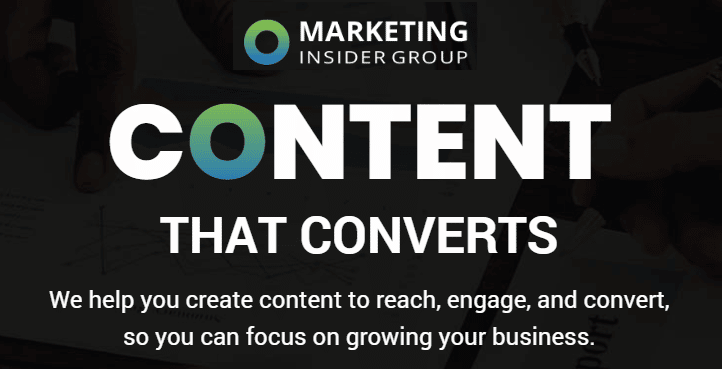When it comes to driving growth for your company, you can’t afford to overlook the value of demand generation marketing. With a comprehensive demand generation strategy, you can create interest in and desire for your products or services. As a result, you can scale faster and hit your quarterly and annual revenue goals.
Before you embark on a full-scale demand generation initiative, you may need a refresher on how the concept works. Even seasoned marketers can get confused about demand generation parameters. Being able to understand what it is, what it isn’t, and how to take advantage of its benefits is essential.
What Demand Generation Looks Like in Action
Demand generation is best described as a top-of-funnel marketing function. The tactics used during the demand generation phase are geared toward consumer awareness. However, they’re not focused on lead generation, per se. That’s a confusing point to many people who equate demand with bringing in leads. As explained by Matter Made, demand generation ratchets up feelings of need for a brand, item, experience, etc. In contrast, lead generation assumes the demand is there and takes it a step further into the nurturing realm.
A good way to look at this difference in a real-world scenario is to consider the growth of the bottled water industry. Though demand for bottled water is expected to grow at a CAGR of 6.7% until 2030, that demand wasn’t always so strong. Before the 1990s, bottled water was available but not considered essential by the public. Then, big beverage brands changed everything.
Brands like the Coca-Cola Company put on a push for inexpensive bottled water as a refreshing alternative to sodas, juices, and other thirst quenchers. The push—augmented by warnings about the inadequacies and potential dangers of municipal tap water—resulted in high demand. Today, no one blinks at the thought of purchasing bottled water because the desire is so intuitive and ingrained.
Common Demand Generation Marketing Tactics
There’s little doubt that if you can foster demand for what you offer, you’ll find it easier to convert consumers into customers. The key is deploying the right mix of demand generation marketing tactics. Though you don’t have to engage in all demand marketing approaches, you should have a good idea of the most common ones.
1. Customer reviews
In the digital age, user reviews have the power to sway readers. Whether the reviews are on your website or a third-party app, they can be huge assets to your demand generation machine. Case in point: Retail Insider indicates that 83% of people don’t fully trust corporate-driven advertising. Yet 95% of shoppers admit that reviews can and do influence their buying behaviors.
With this in mind, part of your demand generation marketing program could include requests for reviews from customers. Getting reviews can be challenging, so try sweetening the pot by offering incentives. Or, just follow up after your first “ask”. Sometimes, all it takes is a reminder or two.
2. Informational, inspirational content
A large part of most demand generation marketing initiatives revolves around content. And content can include anything from whitepapers and infographics to blog posts and videos. You can’t rev up demand if you’re not being visible with content in all its forms.
To optimize the output and efficiency of your content, try to do at least “double duty” with each piece. For example, make sure that an article you’re writing for a high-ranking publication includes backlinks to your site. Plus, be sure that any social media posts have strong CTAs so you can prompt people to move into your pipeline.
3. Social media and other online influencers
The role of social influencers continues to grow and can be useful for your demand generation marketing. Even micro-influencers with modest followings can bring about an interest boost in your company.
If you’re working as a marketer for a B2B sales industry, you may want to look for influencers who have podcasts or routinely livestream. The podcasting movement is continuing to swell. Finding the right podcaster to promote your brand, merchandise, or expertise could be a game-changer.
4. Advertising campaigns
Paid digital and offline advertisements can play a part in your demand generation marketing roadmap. With advertisements, you can target and retarget people who fit your top customer personas. That way, those people will be introduced to your brand.
Demand generation advertising should concentrate on educating and enticing rather than directly selling. You want to make readers hungry for more information, not try to convert them immediately. Consequently, include a CTA that sends them down the path toward lead generation but doesn’t try to turn them into instant fans.
Final Tips for Demand Generation Marketing Success
If you’re trying to grow your business, you can’t overlook demand generation marketing. But be ready to put some of these tips into play as you establish your demand generation initiatives:
- Demand generation takes patience. It won’t make your brand a household name overnight. With consistency, though, it can make your brand familiar and desired.
- Demand generation should be measured. The only way to know if your demand generation strategies are working is to measure them. Some helpful KPIs to track include customer lifetime value, number of sales-qualified leads, and customer acquisition cost.
- Demand generation requires constant testing. Brush off your A/B split test skills. You’ll want to test the efficacy of all demand-related content to find out what’s building excitement most effectively.
When there’s a buzz around your brand, you’re better positioned to quickly scale up operations and profit margins. And demand generation marketing can be one of the speediest ways to grow any business.
The post How Demand Generation Marketing Can Speed Up Growth Campaigns appeared first on Marketing Insider Group.
Source link




